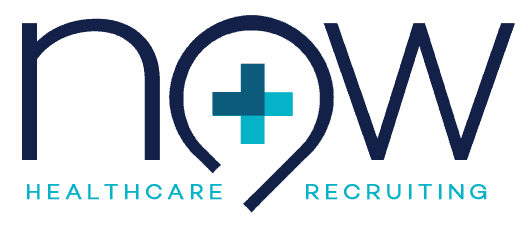A few representatives from NP Now attended the ASPR conference in Orlando last month, and they were particularly impressed with Adam Ullman’s discussion on the topic, “Utilizing Benchmarks to Optimize Operational Efficiency.” We were fortunate to be able to have an interview with him in order to further learn from his expertise.
Adam Ullman, RN, MPA, FASPR, CMSR is currently the Senior Physician Recruiter with Henry Ford Medical Group in Detroit, MI.
Tell us a little bit about your background in recruiting and why you chose to speak on the topic, “Utilizing Benchmarks to Optimize Operational Efficiency?”
Before I started my current role, I served as the Director of Physician Recruitment for Care New England Medical Group, a four-hospital system in Rhode Island. I entered into physician recruitment in 2010 with Mohawk Valley Health System in Utica, NY, starting out a physician recruiter and then ascending into the Director role, in which I served for seven years.
During that time, I finished my education and became a Registered Nurse in 2011. Wanting to utilize my degree, I served in this capacity on a medical/surgical unit at Upstate Medical Center in Syracuse, NY for two years. Since then, I have been in charge of operations and case management at US Care Systems, Inc. a licensed Home Healthcare Agency. I currently consult and train for them. In 2012, I received my Fellowship credential from AAPPR (formerly known as ASPR) as well as the Certified Medical Staff Recruitment designation.
While with Mohawk Valley Health System, I volunteered as the Vice President of Upstate New York Physician Recruiters (UNYPR) for three years and became chair of the AAPPR Benchmarking Committee. I am passionate about the need for recruitment professionals to use data in their day to day jobs. For the past several years, I have served as faculty for AAPPR’s fellowship program and expanded that presentation to a breakout session at the AAPPR national conference this year. I also speak at regional conferences throughout the year.
What are your 3 biggest takeaways regarding your discussion that recruiters can easily implement? If they implement these 3 takeaways, what is the biggest benefit that they will see?
The three biggest takeaways which are just three of many – I encourage each recruiter to not limit themselves to just these. However, these are an excellent place to start:
1. Utilize a tracking system.
Many recruiters don’t have access to anything more than an excel spreadsheet, and even then, many don’t use it. We often wear many hats in an organization and our time is stretched very thin. Maintaining our data is often one of the first things to fall by the wayside.
2. Know which sourcing methods bring you the best candidates.
It is essential to know which sources bring you the most candidates, but even more important to know which bring you the best ones! In a time when every dollar we have in our budget is crucial, knowing when and where to spend them becomes an essential component.
3. Be honest about the data.
I can’t stress this enough. Not every recruitment is going to go to plan. There will be bumps in the road and real-world obstacles to overcome. The data can show which part of your process is causing the biggest headaches and can help bring everyone together to remedy those opportunities.
If a recruiter is successful in implementing these three things, they should see an immediate benefit to their day to day endeavors, but also to their broader personal and professional goals. One of the overall themes that I discuss is controlling the message. We are expected to be the experts in recruitment, and we often are. The issue is that in this increasingly data-driven world, without keeping track of our own, we can be left with just our word to defend our decisions. Keeping track of our data and comparing it to national and regional benchmarking will help us set expectations, improve processes, and prove to our leaders how much we contribute to the viability of the health care institutions we represent.
What is the biggest mistake you see recruiters making within this topic?
The biggest mistake I see with this topic is the failure of recruiters to own the message. We tend to forget that we are the educators here, both for our leaders and the people we recruit. The data is in our hands as we are the ones on the front lines who see the effects first hand. It is up to each of us to collect the data and present it to our audience so that they understand what to expect.
An example would be a leader who comes to us with the need to fill an open nurse practitioner role. The correct response would be to look at the data to understand time to fill the position, the associated costs with it, and what challenges we can expect to find. We should then respond to the leader with an approximate timeline, cost, and recruitment plan. This will set the expectations for them and anyone else involved in this recruitment. It is imperative that we set ourselves up to be successful and utilizing data to manage the message and set expectations are a critical part of doing just that.
By Dorothy Blalock, Director of Brand Management at NP Now

